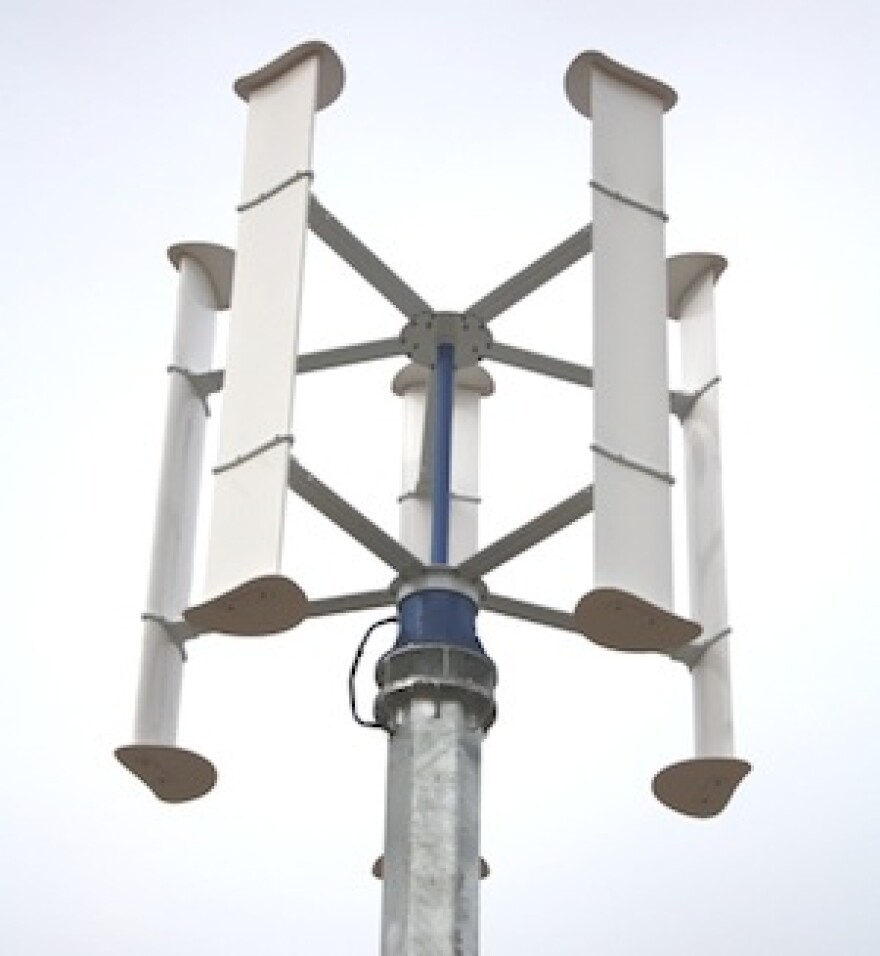With our free press under threat and federal funding for public media gone, your support matters more than ever. Help keep the LAist newsroom strong, become a monthly member or increase your support today.
This is an archival story that predates current editorial management.
This archival content was written, edited, and published prior to LAist's acquisition by its current owner, Southern California Public Radio ("SCPR"). Content, such as language choice and subject matter, in archival articles therefore may not align with SCPR's current editorial standards. To learn more about those standards and why we make this distinction, please click here .
Lancaster Sees First Wind Turbine Installed Under New Regulations

Watch our Antonio Villaraigosa, Lancaster wants to become the alternative energy capital of the world. Today, the first residential vertical axis wind turbine system installed under new city regulations went into operation.
"The City of Lancaster and our surrounding region enjoy an infinite supply of natural resources with the potential to produce alternative energy - namely, wind and sunlight," explained Mayor R. Rex Parris of his high desert Antelope Valley-located city.
"The City Council acted to make residential wind turbine systems more accessible by substantially reducing the permit fees and easing regulations," praised Parris of the updated city ordinance, which drastically expands where turbines can be place within the city. Previously, only select residential areas could install turbines, but now, many more areas could see turbines rise into the sky, provided they fall within general guidelines.
"In a vertical axis wind turbine (VAWT)," explains Mother Earth News , "the blades are attached to a central vertical shaft. The shaft is attached to an alternator located at the bottom of the shaft, sometimes even at ground level. When the blades rotate, they spin the rotor of the generator, producing electricity."







